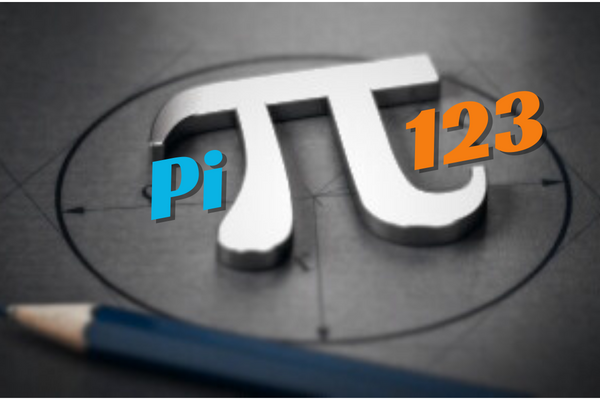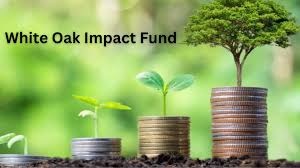pi123: Unlocking the Mysteries of the Mathematical Constant
Introduction to pi123
Mathematics has always been the language of the universe, helping us describe and understand the intricacies of everything from the smallest particles to the grandest cosmic structures. Among its many fascinating concepts is pi (π), a mathematical constant that’s more than just a symbol on your calculator. But what happens when we take a twist on this well-known constant and dive into the mystery behind “pi123”? Is it simply another numerical sequence, or does it open up new realms of mathematical understanding? pi123
In this article, we will unravel the enigma of pi123, shedding light on its potential significance, connections to the world of pi, and how it might relate to various mathematical theories. We’ll explore its applications, delve into its historical context, and discuss what makes this concept so intriguing. Whether you’re a seasoned mathematician or just a curious mind, pi123 is sure to spark your interest. So, let’s embark on this journey together. pi123
What Is pi123?
Before we explore the depths of pi123, let’s break down the basics. Pi (π), as we know, is the ratio of the circumference of a circle to its diameter. It’s an irrational number that starts as 3.14159… and goes on infinitely without repetition. Now, when we mention “pi123,” it might sound like a specific sequence tied to pi itself or perhaps a new mathematical phenomenon.
However, “pi123” isn’t a concept widely recognized in traditional mathematical literature. Instead, it may represent an inventive or lesser-known application of pi. Let’s assume pi123 could either refer to an extension of pi’s digits, a numerical sequence involving pi, or even a code or symbolic representation inspired by pi. This ambiguity is what makes pi123 so tantalizing—there’s a sense of potential just waiting to be unlocked.
Possible Interpretations of pi123
- Numerical Sequence: Could pi123 represent a specific segment of pi’s digits? Perhaps it’s a call to look at the 123rd digit of pi or a particular combination of numbers within its infinite sequence.
- Symbolic Representation: Could pi123 be a symbolic reference? Maybe it combines the known properties of pi with additional constants or operations.
- Mathematical Puzzle: Sometimes in mathematics, certain sequences or symbols act as gateways to larger problems. Pi123 could be a key to an unsolved equation or concept.
The History of Pi
While pi123 may be relatively new or niche, its root, pi (π), boasts a long and rich history. The concept of pi has been known for thousands of years, dating back to ancient civilizations. Egyptians and Babylonians both made early attempts to calculate pi, approximating its value as something close to 3. The Greek mathematician Archimedes is often credited with creating one of the first rigorous methods of calculating pi, using a geometrical approach to pin it between two values.
Fast forward to the modern age, and pi continues to captivate mathematicians. With the advent of computers, we’ve calculated pi to trillions of digits, though only a handful of these are typically needed for most practical applications. However, the infinite nature of pi leaves many questions unanswered, contributing to its mystique.
The Significance of Pi
Why does pi matter so much, anyway? For one, pi appears in more than just geometry. You can find pi in statistics, physics, engineering, and even biology. Its presence in wave functions, signal processing, and even the spiral patterns of shells and galaxies makes it a truly universal constant.
But what about pi123? If it is connected to pi, even tangentially, we can speculate that its significance may also transcend traditional boundaries of mathematics. Could pi123 have implications in advanced physics, cryptography, or algorithmic design? It’s these possibilities that make exploring such concepts so exciting.
Real-World Applications of Pi
- Geometry and Trigonometry: Pi is the backbone of circle-related calculations. The area of a circle, the volume of a cylinder, and the surface area of a sphere all rely on pi.
- Signal Processing: In Fourier transforms and other signal processing techniques, pi helps in decomposing signals into their constituent sine and cosine waves.
- Physics: From calculating planetary orbits to understanding quantum mechanics, pi shows up in equations that govern the laws of the universe.
- Architecture and Engineering: The design of buildings, bridges, and other structures often involves pi, especially when circular components are present.
Delving into Pi123: The Mystery Continues
The idea of pi123 presents an intellectual challenge. If we conceptualize it as an extension or branch of pi, then the possibilities become endless. Some intriguing questions to consider: What if pi123 is a numerical puzzle designed to test our understanding of pi? Could it be part of an algorithm or formula that has yet to be discovered? Or, perhaps, pi123 serves as a shorthand in mathematical notation, a new way to simplify or express complex ideas.
While there may not be any definitive answers about pi123 just yet, the excitement lies in the exploration. Mathematics often evolves through the discovery of new patterns, sequences, and constants. Pi123 might be one such discovery waiting to happen.
Understanding Pi123 through Sequences
In number theory, sequences play a significant role. These sequences—whether simple or complex—often reveal deeper truths about mathematics. One possibility is that pi123 represents a specific sequence within the digits of pi. This could mean identifying every third digit after the decimal point or perhaps focusing on specific groupings of digits that exhibit unique properties.
Common Pi Sequences
Here are a few notable sequences that could be related to the concept of pi123:
- The Pi Digit Sequence: This involves the actual digits of pi. For instance, if you start at the first digit and count through to the 123rd, you may find something interesting.
- Prime Number Sequences in Pi: Certain patterns of prime numbers appear within the digits of pi. Could pi123 point toward a prime-related sequence?
- Palindrome Sequences in Pi: Mathematicians have noted that there are palindromic sequences (numbers that read the same forward and backward) within pi. Could pi123 be associated with one of these sequences?
The Role of Pi123 in Modern Mathematics
Even if pi123 hasn’t yet emerged as a mainstream concept, it could play a role in pushing mathematical boundaries. Let’s imagine pi123 is a mathematical sequence or constant that’s not fully understood. It could inspire new research in fields such as cryptography, chaos theory, or even machine learning.
Cryptography, for example, relies heavily on number theory and complex algorithms that often involve primes, randomness, and unpredictability—much like the properties of pi. If pi123 were connected to these ideas, it could unlock new methods for securing information in the digital age.
Potential Applications of Pi123
- Data Encryption: Pi and other constants are often used in algorithms for encryption. Could pi123 be part of a novel cryptographic method?
- Computational Mathematics: Pi123 might also represent a specific sequence useful in high-performance computing, algorithms, or simulations.
- Pattern Recognition: Machine learning models often rely on patterns within datasets. If pi123 holds a particular pattern within the pi sequence, it could have applications in AI.
Pi123 and the Future of Mathematics
As we look to the future, pi123 represents more than just a quirky name or concept—it symbolizes the ongoing curiosity and exploration that define mathematics. While we may not yet have a complete understanding of pi123, it reminds us that math is a constantly evolving field. What we know today is only a fraction of what we might discover tomorrow.
Pi123 might just be a piece of a larger puzzle, leading us toward new breakthroughs in mathematics and science. As mathematicians continue to probe the mysteries of numbers, pi123 could potentially gain significance, perhaps even leading to new branches of mathematical thought.
Frequently Asked Questions about pi123
What is pi123?
Pi123 is not a widely recognized mathematical concept but could represent a sequence or extension of the number pi, or possibly a symbolic or numerical puzzle related to pi.
How does pi123 relate to pi?
Pi123 may relate to the infinite digits of pi or be a novel extension or interpretation of pi’s properties. It could be a sequence within the digits of pi or a symbolic representation combining elements of pi.
Why is pi important in mathematics?
Pi is essential because it’s a constant that appears in many areas of mathematics, from geometry and trigonometry to physics and engineering. It is particularly crucial in calculating the properties of circles and other geometric shapes.
Are there real-world applications for pi123?
While pi123 itself doesn’t have known real-world applications, if it’s related to pi or a new sequence, it could have implications in fields like cryptography, computational mathematics, or even data science.
Conclusion
The mystery of pi123 is one that draws mathematicians, enthusiasts, and curious minds alike into a deeper exploration of numbers and sequences. Whether pi123 is a hidden gem in the vast expanse of mathematical constants or simply a new way of thinking about pi, its potential for inspiring discovery is undeniable. As we continue to explore the limitless world of mathematics, concepts like pi123 remind us that there is always more to uncover, more puzzles to solve, and more connections to make.











Post Comment